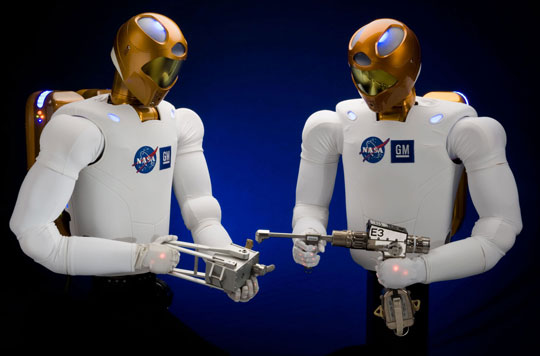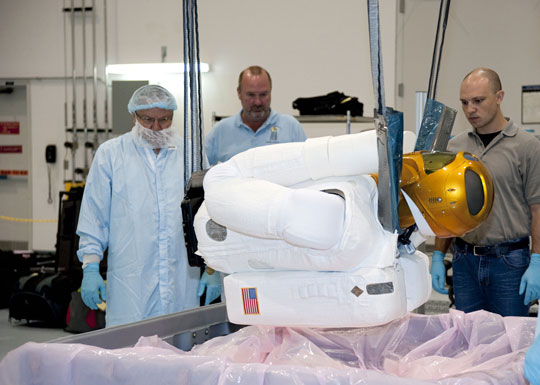The robot Robonaut 2, often called affectionately R2, will become the world's first astronaut robot when it takes the final flight of Discovery space exploration ship to the International Space Station this week.

Two robots Robonaut 2 at Johnson Space Center in Houston, USA. Photo: NASA
The journey is expected to begin on Wednesday afternoon (November 3).AP news agency reported, participating in the last flight of Discovery ship with machine R2 also has 6 members of the " meat skin " crew.
Earlier this week, mission management officials turned on a green light on choosing a new day to launch the Discovery spacecraft due to gas leaks that need to be repaired.
Robot R2 is a collaborative product between the US Space Agency (NASA) and General Motors. NASA hopes this $ 2.5 million "mechanical and electronic feat " will one day support space astronauts.
Many experts dreamed of a not-too-distant future, when Robonaut could handle the cleaning work of the space station, spending hours outside the extreme hot or cold weather, patiently carrying tools for the astronauts walk expedition and cope with emergency situations like fire or toxic gas leaks.

R2 machine is in the finishing stage. (Photo of NASA)
Until now, R2 exists in the shape from the waist up. This robot is 1,016m tall and weighs 149.7kg. Each arm is about 0.8m long.
Scientists are still developing legs for R2. However, the upper body of this robot is considered quite perfect.
Made of carbon-fiber aluminum and nickel, R2's body and arms can help protect robots as well as " fellow " astronauts. Thanks to the 350 electronic sensors mounted throughout the body, this robot can even sense a small hair with the tip of a finger.
Four light, conspicuous cameras are mounted behind the face shield of R2. In addition, an infrared camera is placed in this robot mouth to support deeper recognition.
Rob Ambrose - leader of the automation, robotics and simulation department of Johnson Space Center in Houston, USA, judged that putting R2 into space " may be a small step forward for this robot but is indeed is a leap forward for the entire robot world ".
 Van Allen's belt and evidence that the Apollo 11 mission to the Moon was myth
Van Allen's belt and evidence that the Apollo 11 mission to the Moon was myth The levels of civilization in the universe (Kardashev scale)
The levels of civilization in the universe (Kardashev scale) Today Mars, the sun and the Earth are aligned
Today Mars, the sun and the Earth are aligned The Amazon owner announced a secret plan to build a space base for thousands of people
The Amazon owner announced a secret plan to build a space base for thousands of people